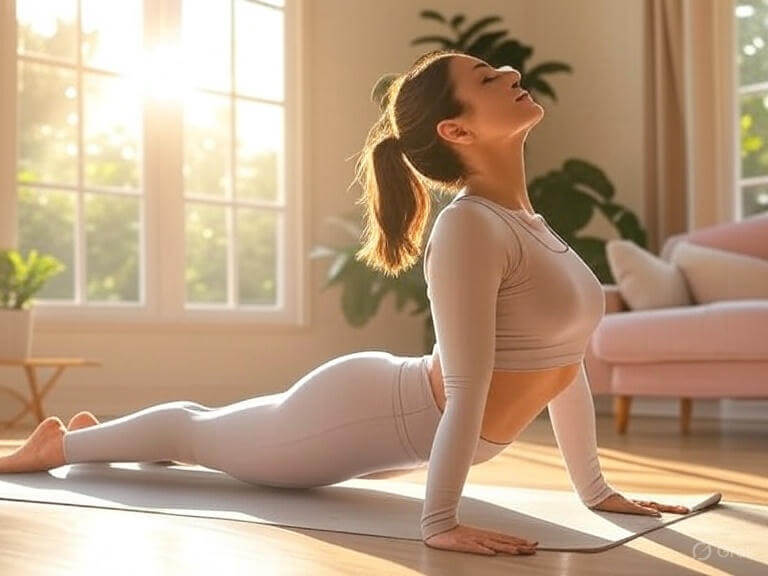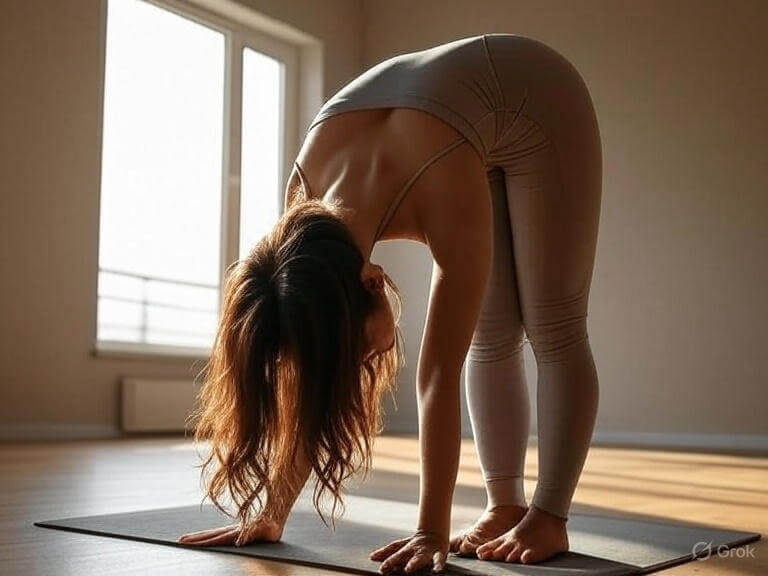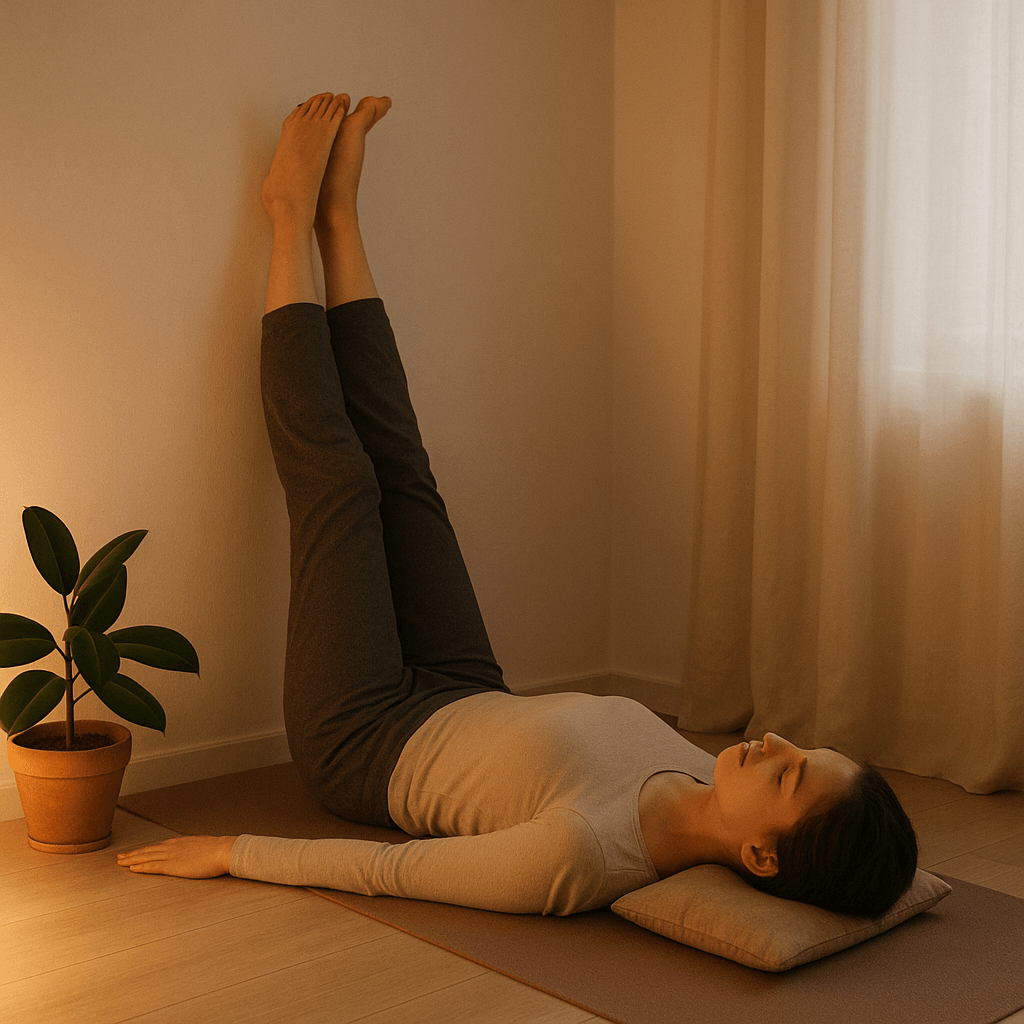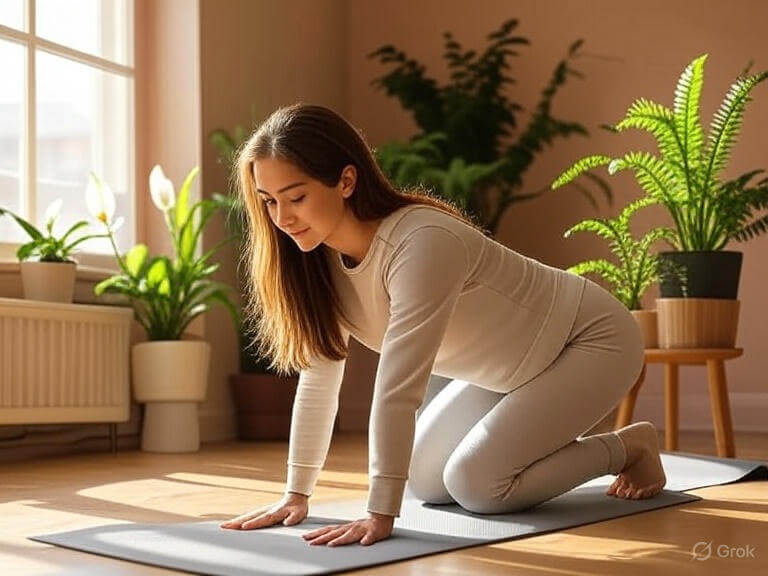In today’s fast-paced world, stress has almost become a daily companion—whether it’s work deadlines, personal responsibilities, or the constant flood of notifications on our phones. While a certain amount of stress can motivate us, too much of it can drain our energy, disrupt sleep, and affect our overall health.
One of the most accessible and effective ways to manage stress naturally is through yoga. You don’t have to be flexible, wear fancy activewear, or join an expensive studio. Beginner yoga poses for stress relief can be done right in your living room, in as little as 10 minutes a day, and still provide noticeable benefits.
Yoga works not just on your muscles and joints but also on your mind. By combining gentle stretching, mindful breathing, and focused attention, you can activate your body’s natural relaxation response, reduce anxiety, and even improve your mood.
Understanding Stress and the Role of Yoga
Before diving into the poses, it helps to understand why yoga works so well for stress relief.
When we experience stress, our bodies trigger the fight-or-flight response, releasing hormones like cortisol and adrenaline. While helpful in dangerous situations, this constant state of alertness—especially from chronic stress—can lead to tension headaches, tight muscles, fatigue, and even digestive problems.
Yoga directly counteracts this by:
- Slowing down your breathing to signal safety to your nervous system.
- Improving circulation so muscles receive more oxygen and relax.
- Releasing endorphins, the body’s feel-good hormones.
Studies published in the Journal of Alternative and Complementary Medicine have shown that even short, regular yoga sessions can significantly lower cortisol levels.
How Yoga Supports Stress Reduction
Yoga is unique because it’s not just exercise—it’s a mind-body practice. Here’s how it works:
- Gentle movement helps release tightness in common stress zones like the neck, shoulders, and lower back.
- Breathing techniques slow your heart rate and calm the mind.
- Mindfulness pulls you away from constant overthinking and into the present moment.
You don’t have to twist into advanced shapes to feel relief. Even simple, beginner yoga poses for stress relief can make a difference if practiced consistently.
Mind-Body Connection in Yoga
Think about the last time you were stressed—maybe your shoulders hunched forward, your jaw tightened, or your breath became shallow. These are physical signals of emotional strain. Yoga helps you notice these patterns and consciously release them.
When you link breath with movement, you create a feedback loop:
- The mind calms → the body relaxes.
- The body relaxes → the mind calms even more.
Over time, this awareness can help you catch stress earlier and respond more calmly in everyday life.
Common Causes of Everyday Stress
Stress doesn’t always come from big life events. Often, it’s the small daily pressures that add up:
- Rushing to meet deadlines at work.
- Balancing family and personal responsibilities.
- Feeling overwhelmed by constant notifications and social media.
- Living in noisy or crowded environments.
These ongoing stressors can leave you in a constant state of alertness. Yoga offers a chance to reset—not just physically, but mentally and emotionally.
Beginner Yoga Poses for Stress Relief
Here are four beginner-friendly yoga poses that are gentle yet effective.
1. Child’s Pose (Balasana)
Best for: Lower back release, calming the mind.
How to do it:
- Kneel on the floor, big toes touching, knees apart.
- Sit back on your heels.
- Fold forward, extending your arms in front or alongside your body.
Why it works:
Child’s Pose gently stretches your hips, thighs, and lower back while encouraging deep breathing. This position helps signal your nervous system to relax, making it a go-to pose for emotional grounding.
Pro tip: If your hips feel tight, place a cushion under your belly for extra support.
2. Cat-Cow Stretch (Marjaryasana-Bitilasana)

Best for: Relieving neck and back tension.
How to do it:
- Start on your hands and knees.
- Inhale, drop your belly, lift your head and tailbone (Cow).
- Exhale, round your back and tuck your chin (Cat).
Why it works:
The gentle spinal movement improves flexibility, releases stiffness from sitting, and promotes a rhythmic breathing pattern that reduces anxiety.
Pro tip: Move slowly and match each movement to your breath.
3. Standing Forward Bend (Uttanasana)

Best for: Calming the mind, stretching the hamstrings.
How to do it:
- Stand with feet hip-width apart.
- Hinge at the hips and fold forward, letting your head and arms hang.
Why it works:
This pose increases blood flow to the brain, which has a soothing effect on the mind. It also decompresses the spine after long periods of sitting or standing.
Pro tip: Keep knees slightly bent if your hamstrings feel tight.
4. Legs-Up-the-Wall Pose (Viparita Karani)

Best for: Full-body relaxation, improving circulation.
How to do it:
- Sit sideways against a wall.
- Swing your legs up as you lie back.
- Rest your arms comfortably at your sides.
Why it works:
This gentle inversion helps drain tension from the legs, eases lower back discomfort, and activates the body’s relaxation response.
Pro tip: Close your eyes and practice slow, steady breathing for deeper calm.
Step-by-Step Guide to Safe Practice
- Alignment first: Keep your spine long and shoulders away from your ears.
- Breathe deeply: Never hold your breath—inhale through the nose, exhale slowly through the mouth or nose.
- Use props: Cushions, blankets, and yoga blocks make poses more comfortable.
- Avoid pain: Stretch gently; discomfort is fine, but sharp pain means stop.
Creating an Effective Stress-Relief Routine
- Frequency: Aim for 3–5 sessions per week, 15–30 minutes each.
- Mini-breaks: On stressful days, do 5 minutes of Legs-Up-the-Wall or Child’s Pose.
- Flow example: Start with Cat-Cow → move to Child’s Pose → finish with Legs-Up-the-Wall.
Tips for Staying Consistent
- Create a quiet space with minimal distractions.
- Practice at the same time daily to build habit.
- Track progress in a journal—note mood before and after.
- Celebrate small wins like holding a pose longer or feeling calmer sooner.
FAQs About Beginner Yoga Poses for Stress Relief
1. How long should I hold each pose?
30–60 seconds for active poses, 5–15 minutes for restorative ones like Legs-Up-the-Wall.
2. Can I do yoga if I’m not flexible?
Yes! Yoga is for everyone. Use props and modify poses to suit your comfort level.
3. Is morning or evening better for stress relief?
Both work—mornings help set a calm tone for the day, evenings help unwind before bed.
4. How soon will I feel benefits?
Some people feel calmer after just one session, but lasting results come with regular practice.


